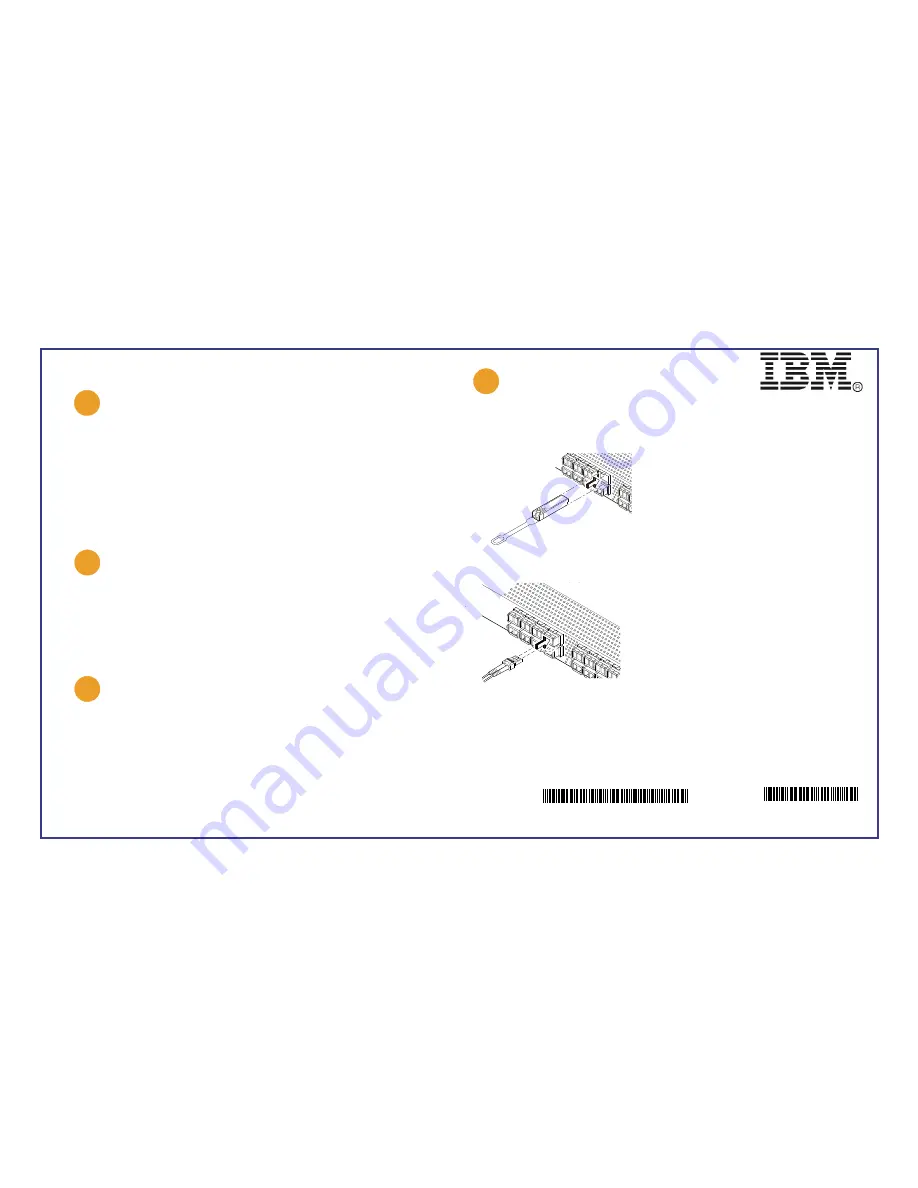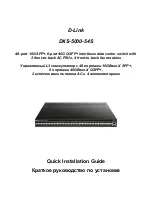
5
5
6
6
7
7
4
-
0
1
!
Setting the switch password
1. Click
Next
on the
EZManager Welcome to Switch Configuration
screen.
The
Set Parameters
screen is displayed.
2. Create a new administrator account password in the
Set Parameters
screen.
3. Enter a new name for the switch (optional step).
4. Adjust the date and time for your time zone (optional step).
5. Click
Next
.
Configuring the zones and performing device selection
1. Select
Typical Zoning
on the
Select Zoning
screen and click
Next
.
Typical Zoning is the default zone configuration. See the
EZSwitchSetup Administrator’s Guide
for more
information on zone configuration.
2. Enter the number and types of devices that you are connecting to the switch on the
Device Selection
screen.
EZSwitchSetup uses these values to automatically configure the ports on your switch for the devices that
you are connecting.
Connecting devices
The
Connect Devices
screen displays a graphical representation of the switch with the device connections
based on the information that you entered when you configured zones and performed device selection. The
screen will show all physical connections as missing until you connect the devices that you specified.
1. Install the SFP+ transceivers in the Fibre Channel ports on the switch to match the ports shown onscreen.
a. The 16 Gbps SFP+ transceivers have a long pull tab
and no latching wire bail. Remove any protector plugs
from the SFP+ transceivers you are going to use, and
position and insert each SFP+ transceiver as required
(right side up in the top row of ports and upside down
in the bottom row of ports). Use the pull tab on the 16
Gbps SFP+ transceivers to help push the transceiver
into the port.
If you are using 8 Gbps SFP+ transceivers, close the
latching wire bail.
b. Repeat for the other ports.
2. Make the physical connections to your host and storage devices. Match the physical connections shown on
the
Configure Ports and Connect Devices
screen. If you are using 16 Gbps SFP+ transceivers, you may
want to connect the cable to the SFP+ first, and then insert them into the port as a unit.
a. Remove plastic protector caps from the Fibre Channel cable
ends (if any), and position the cable connector so that it is
oriented correctly.
b. Insert the cable connector into the SFP+ until it is firmly seated
and the latching mechanism clicks.
c. The
Configure Ports and Connect Devices
screen shows
missing, valid, and invalid connections as you cable the switch.
Note that it can take up to 15 seconds for the connection to
display as a valid connection. Verify that the connections are
all green and then click
Next
.
3. The
Finish
screen
will display this message: “
Congratulations—you’ve successfully completed the setup!
”
If you used the serial connection for setup, you can remove the serial cable.
Additional configuration options, such as custom zoning, are available from EZManager. See the
EZSwitchSetup
Administrator’s Guide
for more information on custom zoning, and other switch configuration and management
options.
GA32-2214-00
98Y2648
IBM, the IBM logo, and ibm.com are trademarks or registered trademarks of International Business Machines Corporation in the
United States, other countries, or both. A complete and current list of other IBM trademarks is available on the Web at
www.ibm.com/legal/
© Copyright International Business Machines Corporation 2012. All rights reserved. US Government Users Restricted Rights – Use,
duplication or disclosure restricted by GSA ADP Schedule Contract with IBM Corp.
© 2012 Brocade Communications Systems, Inc. All Rights Reserved.
Printed in USA
4
Setting the switch IP address
If you are using a DHCP server to set the IP address: the switch must have DHCP enabled. The DHCP server
must also be on the same subnet as the switch. To set a static IP address, complete the following steps:
1. Enter the required information in the
SetSwitch IP Address
screen.
2. If prompted to install Active X or a version of the Java runtime environment, do so. Reboot the setup
computer, if required.
3. Click
Next
.
The
Confirm IP Address
screen is displayed.
4. Click
Next
to confirm the addresses.
The
Continue Configuration
screen is displayed.
5. Click
Continue with EZManager
.
!




















